Written by Carey Habalar, 2003, with addendums 2011. Published in “Pennsylvania A Fine State of Fairs,” 2004. Source material: New Holland Farmer’s Fair 50th Anniversary Book, 1981. Addendum “2000s,” 2011.
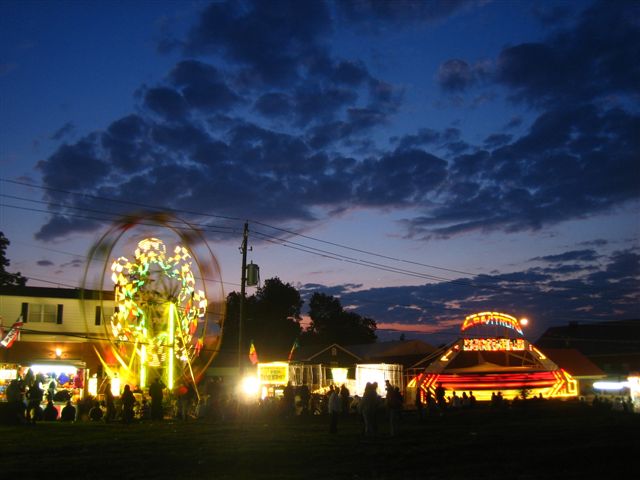
Every year the streets of New Holland close to traffic and the center of town transforms into a celebration of farm and community. The crisp autumn air is sweetened with funnel cake, hot cinnamon rolls, and cotton candy. Laughter rings out and dazzling lights shine on the midway filled with thrilling rides and games of chance. The four day event kicks off with the Spectacle of Bands Parade Wednesday evening at 7 p.m. where excitement and attendance is at its peak. The entire two-mile route is flooded with spectators and is quite a sight to see. There is something for everyone throughout the week including an FFA tractor driving contest and a Swine and Sheep Show and Sale at the New Holland Sales Stables. The Tug-of-War and Pedal Power take place on Franklin Street. A Bake Sale and Kid’s Day are held in the ambulance parking lot. Saturday starts off with a Horseshoe-Pitching Contest at the park and continues with a Pet Parade and Baby Parade on Main Street. In addition, there are a whole host of exhibits to enjoy. The New Holland Farmer’s Fair, known to many as “Farm Show”, has been around for over 75 years and has a very rich and colorful history.
It was August 1927 when a team of five people met to acquire information to start a Farmer’s Day Association for New Holland. H. Earle Wright, E.L. Knecht, L.M. Storb Sr., Eli M. Hess, and Harry E. Ressler were chosen for this event to be held in October. The business people of New Holland were studying the successes of Farmer’s Day Exhibits in the neighboring towns of Lititz, Manheim and Ephrata. A meeting was held August 22 and the initial steps toward a Farmer’s Day Exhibit were underway. On August 31 a public meeting was held to organize an association that would sponsor the production of this three-day fair. The election of officers included Charles S. Zwally, President, Issac W. Cauller, Secretary, and Paul F. Esbenshade, Treasurer. A financial planning committee was comprised of Wm. E. Davis, L. M. Storb Sr., Eli Hess, H. Earle Wright, and C.M. Diller. On September 10, another meeting was held with a special invitation to every farmer and businessman in Earl, East Earl, West Earl, Salisbury, Caernarvon, Leacock, and Upper Leacock Townships. Families and friends were also encouraged to attend this very important public meeting. Spirits ran high as the first annual Farmer’s Day Show was set for October 21 and 22, 1927.
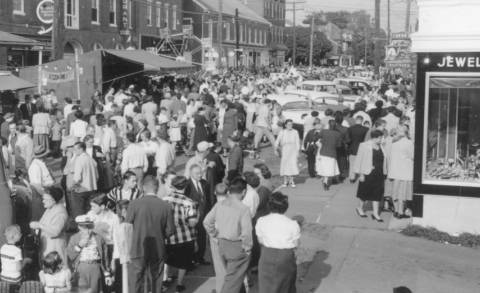
President Zwally appointed chairmen to the following categories: general overseer, publicity & printing, exhibit concessions, lighting, canned goods, fancy work, school exhibits, grain, tobacco & potatoes, fruit & vegetables, livestock, commission cattle, poultry, eggs, flowers, dogs, and educational moving pictures. First prize money and first through third place ribbons were awarded in each of the above groupings. Virtually every business in the center of town donated the use of its windows for displaying exhibits. In addition, the then high school auditorium was obtained for corn, potatoes, tobacco, and vegetables. The flower show was displayed in the dining room of the New Holland House and the Stauffer Sales Company housed the poultry, livestock, and dogs. Council approved the closing of North and South Roberts Avenue, where 68 spaces were laid out for the displaying of automobiles, machinery, and household appliances of all kinds. The entire length of the street was equipped for the night with 100 candlepower lamps strung every 4 feet. In addition, the state approved the closing of Main Street between Custer and Railroad Avenues. There were refreshment stands and entertainment both days courtesy of the City Band of Lancaster. Attendance was estimated between 15,000 and 18,000, well above what anyone could’ve imagined. The event was deemed the biggest, cleanest, and most elaborate affair ever held in the borough.
With a grand success under their belt and a balance of $217.29 from the first show, next year’s fair was to be held for three days, October 18, 19, and 20. The year was 1928 and it was New Holland’s 200th Anniversary. An additional street was added, Franklin from Roberts to Railroad. Changes were also made to some of the exhibits. New categories included honey and bantams & pigeons. Windows and antiques were added to the fancy work category. Fruits & vegetables became separate categories as did grain from tobacco & potatoes. Rules for the exhibits were established. There were 100 outside spaces marked off along North and South Roberts Avenue and East Franklin Street for displaying commercial exhibits including farm machinery and household goods and automobiles. Unique displays included Wright’s Bakery doughnut-making machine and Overly & Good’s gas engine that ran a cream separator, a wash machine pump, and also rocked a baby. The attendance nearly doubled that of the prior year.
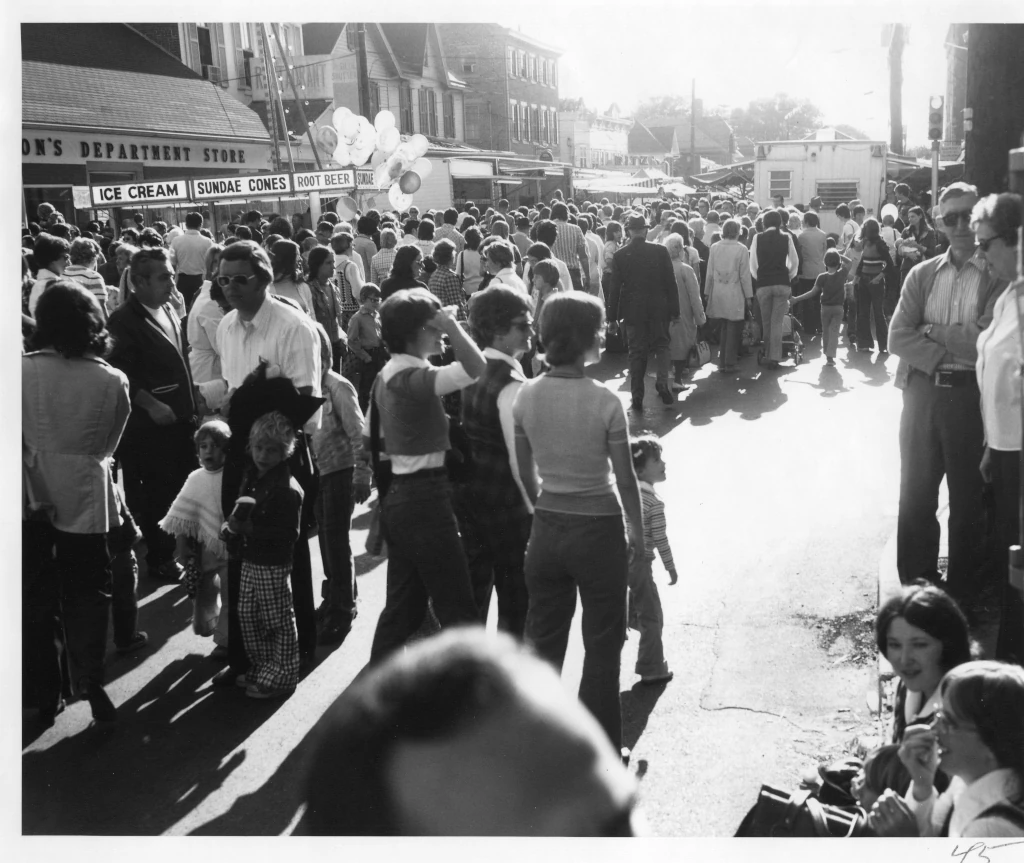
The ’30s
The decade of the 1930s saw many modifications and additions to the fair despite the Great Depression. By 1930, second and third prize money was awarded and a new category for horses and mules was added. The New Holland Farmer’s Day Association became chartered and incorporated on May 5, 1933. The attendance at that year’s show was estimated at 20,000. Some great firsts at the 1934 show included a Mummer’s Parade with $40.00 in prize money, a Baby Parade with 60 children partaking, and an “Industrial Parade”, which was held on Tuesday evening. There was a Quoits-Pitching Contest and bicycle races were held on the high school property. Due to bad weather on Saturday that year, the fair was actually continued on Monday and Tuesday evenings with the consent of the concessionaires! 1935 saw the Second Annual Horse Show which was the first year held in conjunction with the Farm Show. The Horse Show remained a great attraction at the fair for many years. It was also the first year for women to enter the Corn-Husking Contest. In 1936, the Industrial Parade was moved to Thursday evening and the Mummer’s Parade was held on Friday evening. There was a Harmonica Contest which was judged on musical ability and applause. 1938 brought the first Baby Beef Show and the following year in 1939, the first Pet Parade was held.
The ’40s
Although there were no fairs from 1941 to 1945 during World War II, the 1940s were still filled with many great fairs. In 1946, the 15th Annual New Holland Farm Show had resumed and State Candidates of both major parties for Pennsylvania visited the fair that year. It was a time when the first photographs of the fair began to surface, many of which are shown in the premium books. The fancy work division added an art category in 1947 and in 1949, it became a separate department. 1947 was also the first year for the 4-H Pig Club where all the pigs were offered at public auction after being shown and judged. New entertainment including Shorty Long and his Santa Fe Rangers, The Ammon Family, and the New Holland Victory Band became popular. Fair-goers rode exciting rides brought by Morris Hanum. The decade was capped off when, in 1949, a fourth day was added to the yearly event.
The ’50s and ’60s
The 1950s and 1960s saw continued growth of the young fair. In 1951, the entertainment of Red Skiles and his Happy Valley Boys and the Farmer’s Fair German Band were seen performing in the streets of the fair for many years. In 1952, the Spectacle of Bands Parade, comprising both Industrial and Mummer’s divisions, was moved to its current day of Wednesday evening. The first Kid’s Day was organized and held in 1953. A milestone was reached in 1956 with the 25th Anniversary of the Farm Show. Several individuals were recognized in the premium list that year for their outstanding and devoted service. In 1958, there was an adult Hula-Hoop Contest held on South Railroad Avenue. In 1960, a Democratic Rally was held on Thursday evening and a Republican Rally on Friday evening. The first year for the Safe Tractors Operation and Maintenance Contest was in 1961. In 1963, the Garden Spot 4-H Sewing Club was established. The model show started in 1965 as did the first Tug-of-War among local fire companies. The original prizes were $50 for first place and $25 for second. In 1969 the handcraft show was started.
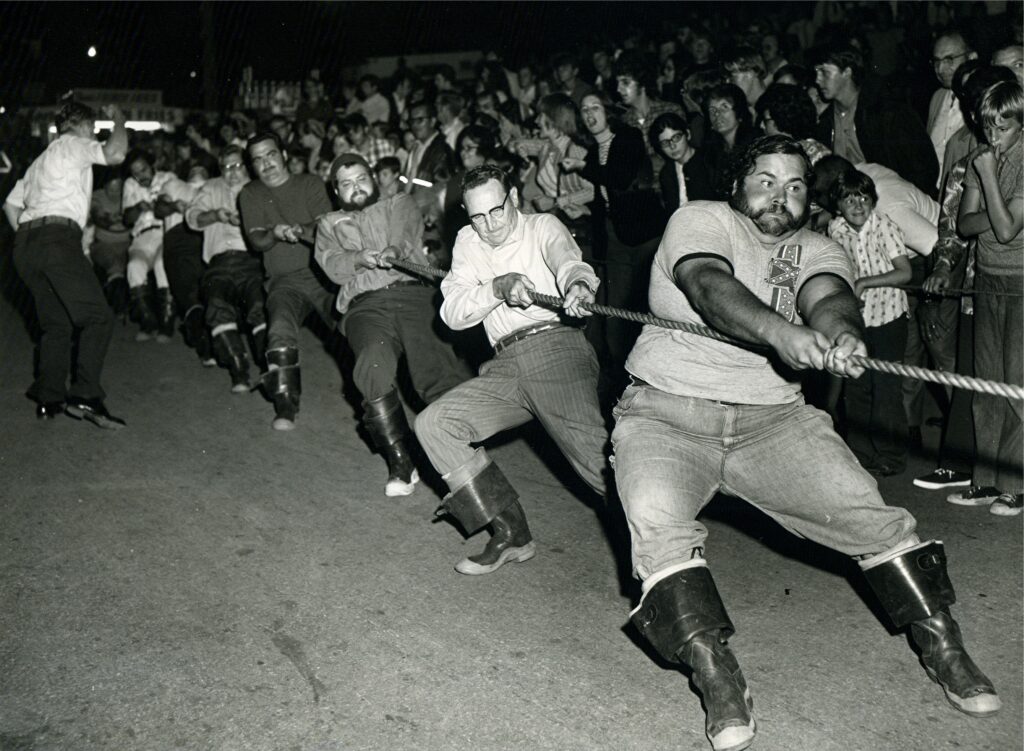
The ’70s and ’80s
By 1970, the Tug-of-War prizes had changed and rules that are still used today were established. A Women’s Tug-of-War was implemented, but only lasted two years due to lack of team representation. Later, a Ladies Bucket Brigade was held for five years, but again, representation was low and it was eventually cancelled. 1972 was the debut year for Henry T. Cole Show’s midway. They continue to bring bigger, awesome rides each year. The Spectacle of Bands Parade route was moved from Main Street to Broad Street in the early 1970s. This was due to the growing number of concessions on Main Street. By 1976 photography exhibits were added to the art show. Another goal was attained as 50 years of Farm Shows were celebrated in 1981. This was also the year for the first Horseshoe-Pitching Contest where both male and female participants try their luck at winning a trophy on Saturday. In 1985, the first Pedal Power was held in which children ages 3 through 6 and 7 through 10 compete in a tractor pull contest. The Pet Parade moved to Saturday afternoon in 1986 and with that new classes and bigger prizes were awarded. That same year a Bake Sale was started in the ambulance parking lot.
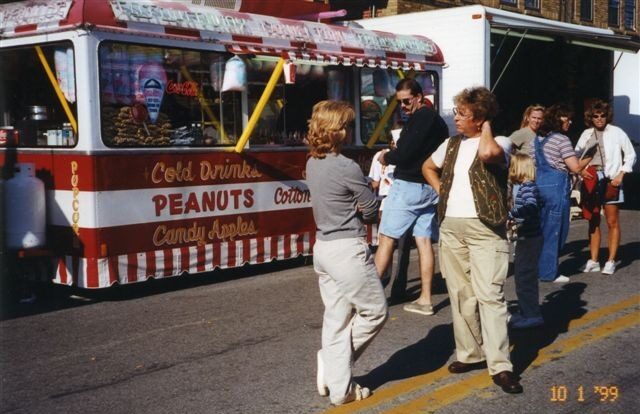
The ’90s
1990 marked the first year for the Sheep and Swine Show and Sale. An FFA Tractor-Driving Contest for high school students began in 1995. Throughout the 1990s and today, the Tug-of-War continues to be a huge draw at the fair with 16 teams battling for a record first place of $600.00, a team trophy, and individual trophies. Second wins $500.00, third wins $400.00, and fourth wins $300.00 plus a team trophy. If a team wins first place three years in a row, they get to keep the 125′ long 2″ hemp rope. Each competing team gets a $50 consolation prize check just for being in the competition. The Tug-of-War currently has seven sponsoring banks and three commercial sponsors.
The 2000s
The decade of the new millennium saw many improvements and additions to the New Holland Farmer’s Fair. In 2005 the New Holland Elementary School, longtime home to the Art, Photography, and Needlecraft, was torn down. Those exhibits were displayed at the Trinity Lutheran Church on East Main Street from 2005 until 2009. The first Long John Eating Contest sponsored by Achenbach’s was held in 2005. The event continues to gain popularity each year. The New Holland Farmer’s Fair website, www.newhollandfair.org, was launched in 2005. Tractor Games open to anyone participating in the Antique Tractor Show or Parade were held from 2005 through 2007. The Baby and Pet Parades merged together in 2007 and marched on Saturday at 1 p.m. There was also a 3 on 3 Basketball Tournament that year at the fair. Free entertainment was brought back in 2007 and held in People’s lot on Thursday and Friday evenings. The Spectacle of Bands Parade route was changed for the first time in 35 years from Franklin Street to Fulton due to safety concerns. The route was subsequently changed again in 2008 from Fulton Street to Jackson. The animal tents were also moved in 2008 to West Fulton Street. A green (recycled) category was added to the models that year and a quilt squares contest was also started. The entertainment went to three nights; Thursday, Friday, and Saturday in 2008.

2009 was a significant year for the New Holland Farmer’s Fair; at 78-years-old, they finally found a place to call home. The fair purchased the old Meke building on the corner of Franklin Street and Roberts Avenue on June 1, 2009. All of the exhibits with the exception of the flowers were displayed in the New Holland Farmer’s Fair building that year. Some other firsts that year included a quilt raffle and 1000 parade programs that were distributed at the beginning of the Spectacle of Bands Parade. The first Grand Marshals, Warren and Velda Peachey, took their honorary ride at the beginning of the 2009 Parade. Kid’s Day was moved to the old Elementary School lot and the street layout also changed to promote a better flow of traffic to the fair’s new building. The Tug-of-War went to two days, Thursday and Saturday. 2009 was also the last year for Henry T. Cole’s midway. Jim Houghton Enterprises has since taken over the job in 2010. The entertainment moved to the old Elementary School lot in 2010 and the Horseshoe Pitching Contest changed to a round robin format to cut down on the pitching time. 2010 also marked the first time in decades that rabbits were exhibited at the fair. Tickets were sold at the 2010 Fair Banquet and Christmas on Main event to win a ride in the Spectacle of Bands Parade. Our first winners were Thomas, Audrey, and Alison Andersen from Stevens, PA. Another milestone was achieved in 2011 when the fair turned 80-years-old!
New Holland’s longtime tradition has grown from just five short weeks of planning into a year round process. The New Holland Farm Show continues to thrive thanks to the countless number of hardworking volunteers over the years.
